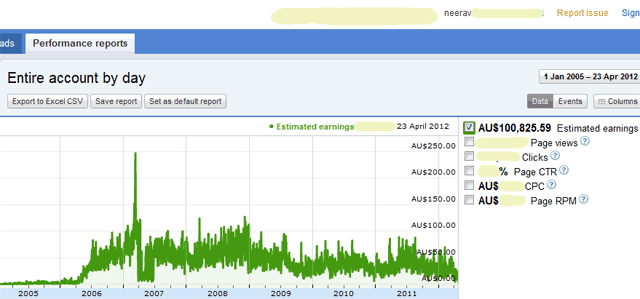It is very dangerous for a business to rely on one particular technology or hero product/service line for it’s continued success. There is a strong temptation to stop innovating when your business comes across a technology product/service idea that takes it to the top.
Blackberry and Nokia are examples of companies that rested on their laurels and fatally took the temptation to coast along enjoying the good times. Now they are learning, perhaps too late, that complacency was one of their biggest weaknesses.
A wise approach for any organisation or individual is to see every piece of good luck or success as a great occasion that must be leveraged swiftly to generate more success in the future. In gaming terms this approach is called “levelling up“.
According to a recent article in New Scientist Level-up life: how gaming can enhance your reality:
“Sophisticated video games have had demonstrable effects on their players. For example, people who frequently play action games often outperform non-gamers on measures of perception and cognition. Other studies have found that intense video game practice improved players’ ability to carry out complex hand-eye coordination tasks and their contrast sensitivity.”
“This shouldn’t be a surprise, says Mark Burgess, a neuropsychologist at University College London. “The brain is constantly reconfiguring itself. Everything new that we learn means that some connections in the brain have been added or altered, even if temporarily,” he says.”
“As a result, Burgess says, the brain is continually creating “schemata” – behavioural ruts that have become entrenched through repetition.”
I haven’t played video games for several years but I did play them for about 15 years. Some of the in-game strategies definitely rubbed off into how I have approached IRL (In Real Life) situations since then.
The kinds of games I enjoyed most were in the real time strategy genre like Dune 2 which required making strategic moves that would pay off in the long term, exploring unknown territory to find and harvest resources that would be accumulated and spent wisely on defensive/offensive measures.
Clearly Blackberry and Nokia are companies that failed to “level it up”. They were happy with their status and resources, so declined taking on risky quests to build new skills and strengths. In the meanwhile their competitors were quietly innovating and building an army of products to attack the complacent market leaders.
Respected mobile industry analyst Horace Dediu from Asymco recently noted that there are “historic consequences of a dip into negative operating margins for a phone vendor”, namely that “there are no examples of vendors who recovered from a position of loss making” which Nokia has recently entered.
Nokia’s result for Q1 2012 was a $1.8bn loss and details show that it is burning through cash reserves, which caused credit rating agencies S&P and Fitch to downgrade Nokia to junk status.
As for RIM’s Blackberry devices their path in the future is also uncertain.
While the Bring Your Own Device (BYOD) trend has meant a lot of organisations have been forced to allow employees to use their iPhone and Android smartphones at work, Blackberry’s security credentials mean it is still mandatory for some kinds of organisations especially government and defence.
We will have to wait for announcements from the annual Blackberry World event May 1st-3rd to see whether the press and analysts become more confident. In the meanwhile analyst Horace Dediu says of RIM that all their “growth since [2005] has been in consumer segments. By abandoning that trajectory RIM is effectively giving up on growth. And giving up on growth is simply giving up.”
It would have been far more sensible for these companies to recognise that things can change quickly in the tech sector and it would be wise to invest a significant portion of earnings from a winner idea at the peak of it’s success into looking for new opportunities that could provide new diversified sources of income.
Jean-François Manzoni, Associate Professor of Management at IMD International in Lausanne and founding director of the INSEAD-PwC Research Initiative on High Performance Organisations wrote a great magazine article “The Battle Against Complacency” (PDF) which is well worth reading
In it he outlines several ways that can help individuals and organisations battle complacency:
- Keeping a clear focus on the target and/or the vulnerabilities – one of the best ways is to focus on a specific competitor, even if they are #2 or #3 in your field and you are leading in position #1.
- Continuous search for better practices – never decide that you have become an expert in an area to an extent that you don’t have to learn how to improve in it further. Remember you can learn from people who are not in your specific field as well.
- Listen carefully – to what customers are saying and allow new employees to make anonymous reports at the end of their induction about organisational procedures that seemed inefficient/illogical etc.
- Face reality – Do not punish staff who speak their minds and warn about risks up ahead if they can back up these fears with evidence and a track record of good judgement.
- Allow Spare Bandwidth – Give yourself and staff time in their schedules to have energy to contemplate the future rather than treating them like hamsters on a wheel. People exhausted from “firefighting” spot fire problems all the time are much more likely to miss a looming crisis approaching in the future.
I agree with many of Associate Professor Manzoni’s points.
The case study I can supply from my own experience is recently passing earning $100,000 in total over the years from Google Adsense advertising revenue share on my websites, which is a significant amount of money for a solo operator. I was reluctant to share my story as an example but some business friends thought I should because it’s a good example of forward planning.
I looked ahead in late 2008 and saw several big potential risks including the $AUS rising against $USD (which would impact on the $US portion of Google advertising revenue share payments) and a high probability of an increasing flood of low grade web content being created by companies like Demand Media that would crowd out small operators like myself from ranking as highly in search results.

So I saved a large part of the money and 3 years ago while it was still coming in at a healthy rate I diversified into other business areas such as a separate travel/photography site The Road Less Travelled which is growing nicely, events photography, photojournalism and freelance writing for a range of magazines and news/opinion websites.
Fast forward to now and for the reasons I predicted Google advertising is still a useful source of revenue but not as much as it used to be. However that’s OK. I didn’t complacently coast along during the good times so have a diverse range of replacement revenue sources instead.


Leave a Reply